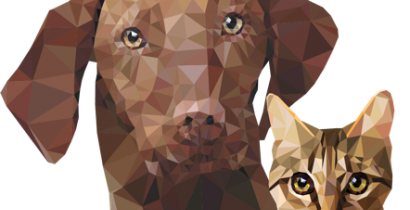Home -> Vectors -> Ticks -> Prevention
PREVENTION
Avoid tick habitats!
Whenever possible, avoid entering areas that are likely to be infected with ticks, particularly in spring and summer when nymphal ticks feed. Ticks favour a moist, shaded environment, especially areas with leaf litter and low-lying vegetation in wooded, brushy or overgrown grassy habitat.
Use personal protection measures
It is unreasonable to assume that a person can completely eliminate activities that may result in tick exposure. Therefore, prevention measures should be aimed at personal protection.
- When camping or hiking in woody or brushy areas: Sticking to the middle of the trail, if possible, avoiding potentially tick-infested areas.
- Wear long-sleeve shirts and long trousers (not shorts) and tuck pant bottoms into tops of socks or boots. Wearing light colored clothing of tightly woven fabrics makes it easier to find crawling ticks.
- Check often for ticks especially after leaving the woods. Common sites of attachment include the underarms, the groin, behind the knee, and the nape of the neck.
- Examine children often, paying special attention to the head, neck and ears. Teach them to avoid tall grass and low brush.
- Remove and preserve any ticks for laboratory testing.
- Repellents may be used according to label instructions either on skin or on clothing.
- Do not allow pets to roam freely.
In general, allowing pets to roam freely is not recommended. Free-roaming pets help perpetuate tick problems, and pets also can be infected with tick-borne diseases. Ticks may hitch a ride and fall off in the house. Ideally keep dogs and cats restricted to a mowed area. If pets are allowed to roam free, check them daily, especially if allowed indoors. Do not let animals rest on furniture and don't sleep with them in the same bed.
Preventative measures – ideally with repellent activity – should be used according to label instructions on a regular basis in dogs and cats which do have free access to tick-infested areas.
Tick removal
To remove attached ticks, the following procedure is recommended:
- Use fine-tipped tweezers, special tick tweezers or shield your fingers with a tissue, paper towel, or rubber gloves. When possible, avoid removing ticks with bare hands.
- Grasp the tick as close to the skin surface as possible and pull upward with steady, even pressure. Do not twist or jerk the tick; this may cause the mouthparts to break off and remain in the skin. If this happens, remove mouthparts with tweezers.
After tick removal
- Do not squeeze, crush, or puncture the body of the tick because its fluids (saliva, body fluids, gut contents) may contain infectious organisms.
- After removing the tick, thoroughly disinfect the bite site and wash your hands with soap and water.
- You may consider saving the tick for identification and possible further examination, as this may help your doctor or vet make an accurate diagnosis. Place the tick in a plastic bag or small sealed plastic container and put it in your freezer.
General aspects for medical advice after tick exposure
- Ticks that move freely over the human or animal skin and are not yet attached cannot transmit pathogens, therefore these ticks should be removed and destroyed.
- Some pathogens can be transmitted by ticks within a few hours after attachment, thus using products that prevent attachement, i.e. with a repellent efficacy, may be considered over product where the tick needs to attach and feed.
- Observe tick bite sites after removal for signs of inflammation, erythema etc.
Folklore remedies
Folklore remedies such as the use of petroleum jelly or hot matches, do little to encourage a tick to detach from skin. In fact, they may make matters worse by irritating the tick and stimulating it to release additional saliva or regurgitate gut contents, increasing the chances of transmitting the pathogen. These methods of tick removal should be avoided. A number of tick removal devices have been marketed, but a plain set of fine tipped tweezers is already sufficient.
EXPLORE OUR CONTENT
 CVBD MapsThe CVBD Occurence World Map presents country-specific situations based on current scientific knowledge and feed-back from experts around the world in an easy-to-grasped way. |
| Read more-> |
 ResourcesElanco Animal Health supports education in parasitology and especially in the field of vector-borne diseases. Access image collections, discover the World Forum calendar, interesting links and our glossary. |
| Read more-> |
 CVBD World ForumThe CVBD World Forum is a working group of leading international experts with the mission to enhance knowledge and communication on companion animal vector-borne diseases for the improvement of animal, human, and environmental health. |
| Read more-> |
